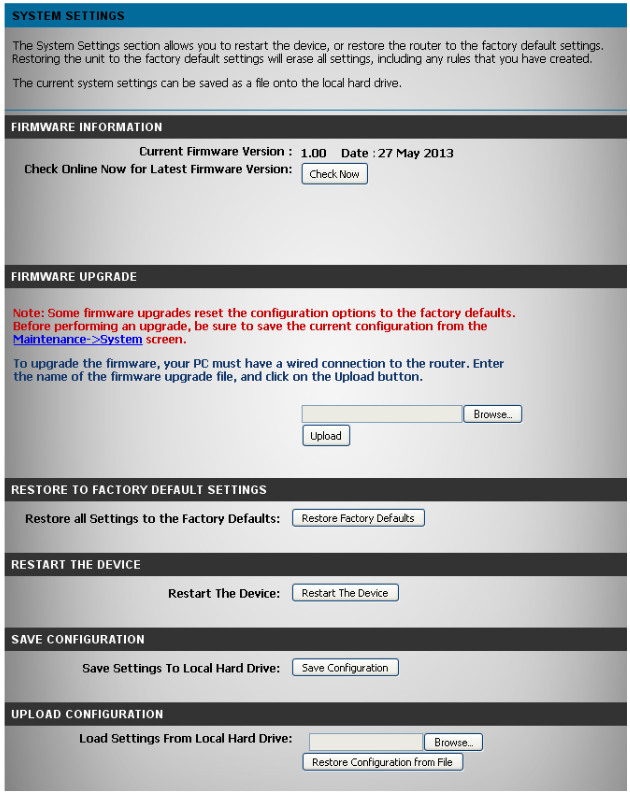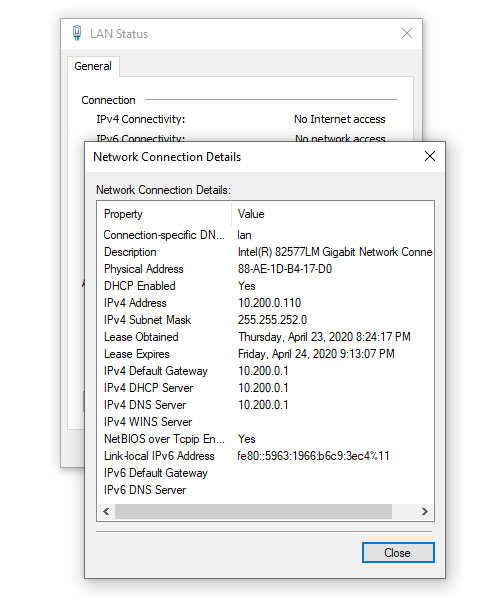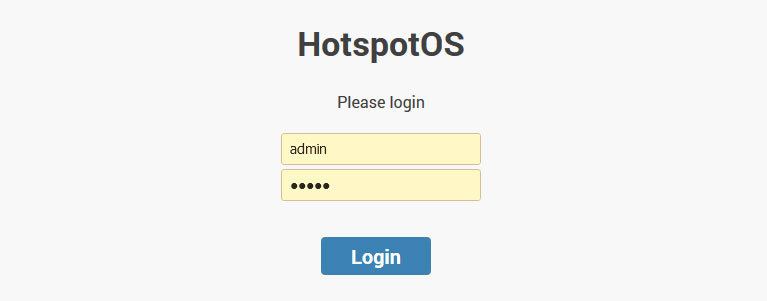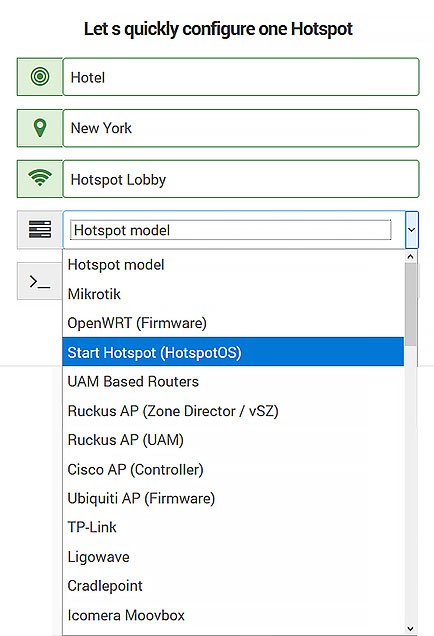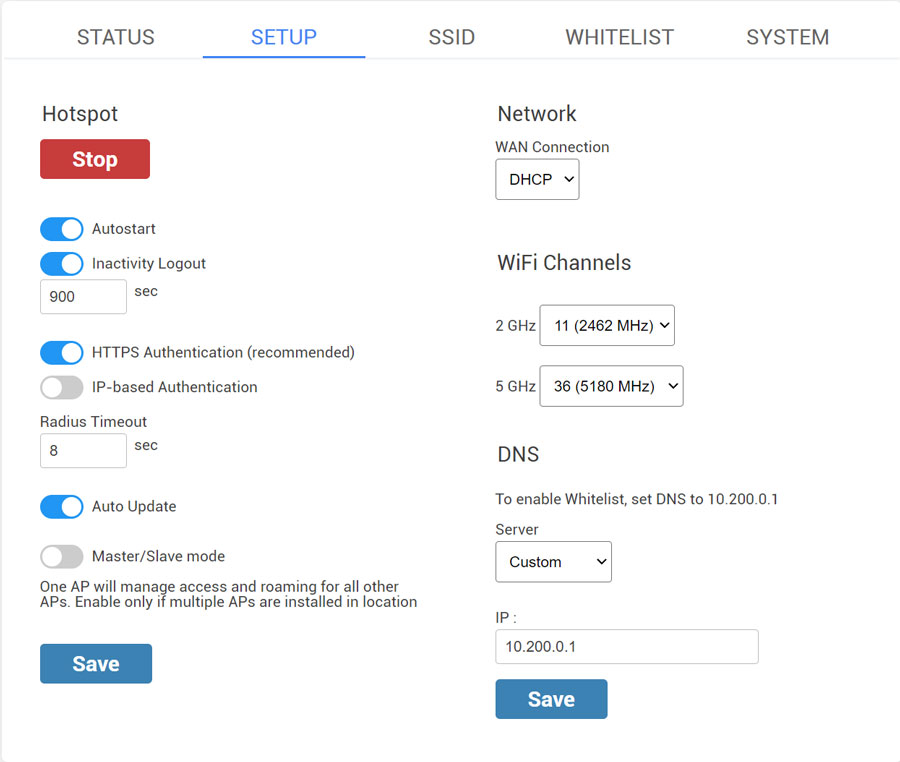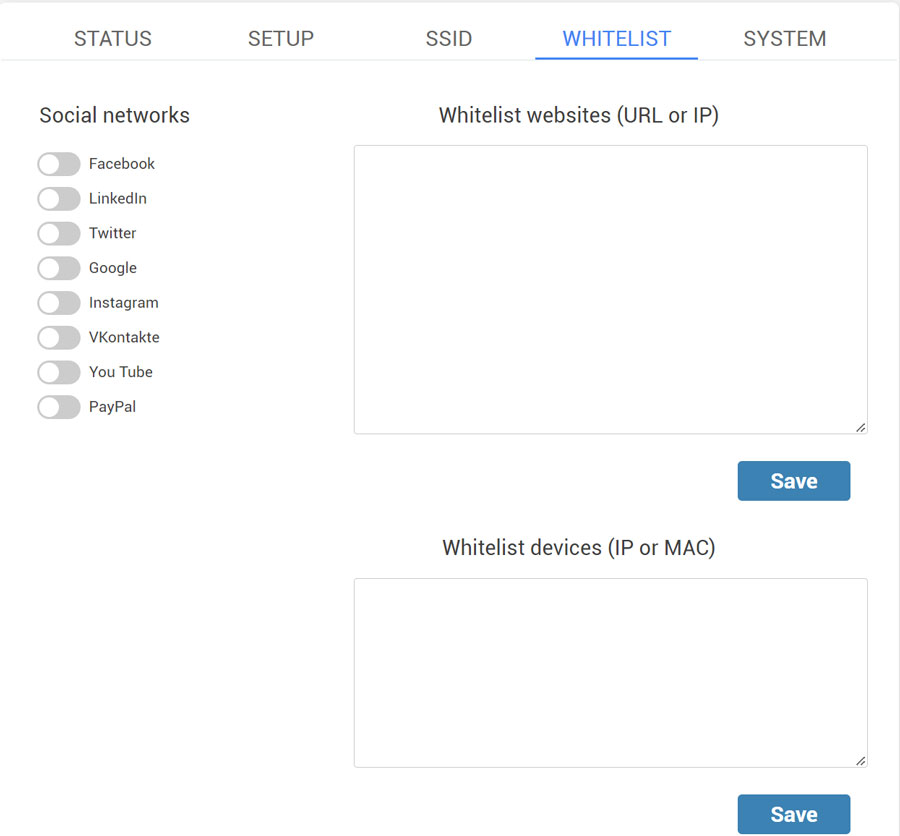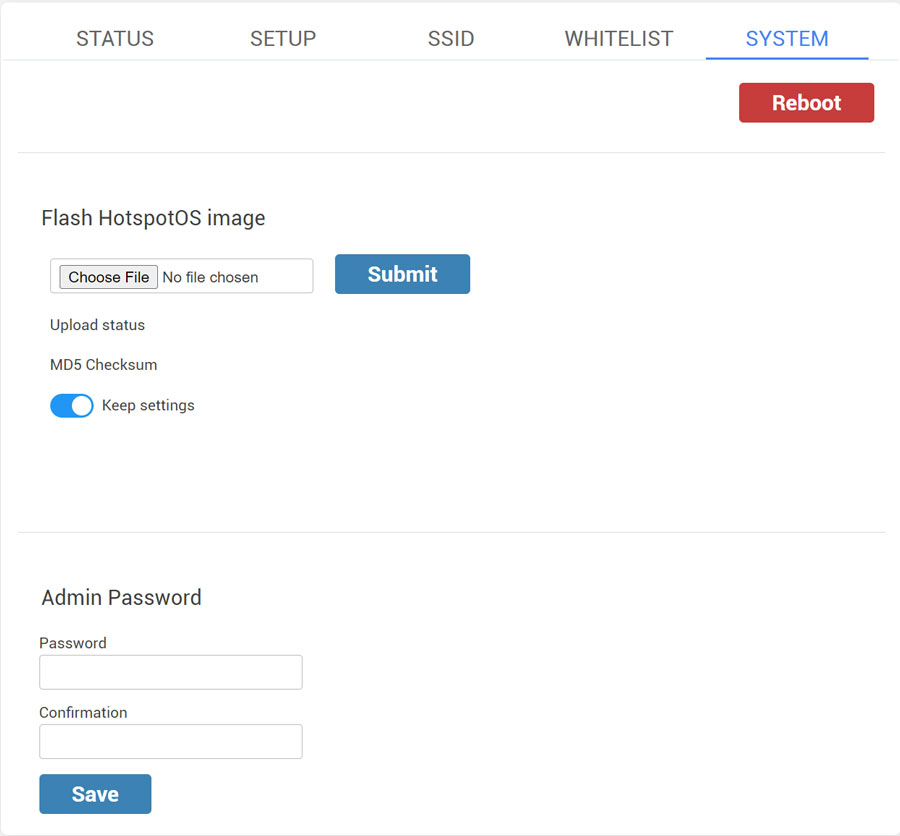Please select a model and download HotspotOS.
DownloadHotspotOSConfigurationTroubleshoot
Please reset the router to factory settings to avoid problems with some previous configuration.
Connect your computer by network cable to the LAN port.
Please log in to the D-link web interface at https://192.168.1.253
When the Windows Security window appears, type admin as the username in the top field and type admin as the password in the bottom field.
After you have downloaded the HotspotOS for your router model, click Browse to locate it on your hard drive.
Click Upload to complete the HotspotOS installation.
During this process, you will see information about the processing.
Reconnect LAN cable or Disable/Enable NIC card in order to get new valid IP address in 10.200.0.x range from router.
Start your browser and in URL field type http://10.200.0.1:8089/ to login to HotspotOS.
Username: admin
Password: admin
Press the Login button to access to Status tab.
On the HotSpotOS Status page, you can check AP MAC address, Public IP, device Uptime, Radius and Cloud status, and a number of users connected to AP.
The MAC address of your AP will be used in the SignUp process.
During SignUp, after typing HotSpot name, select as HotSpot model HotspotOS, and add your MAC address from the Status tab.
From the Setup page configure your AP.
The Hotspot is started and the Autostart and Inactivity Logout options are active by default.
Inactivity Logout is set to 900 sec. Inactivity period defines how long will the device stay logged-in without activity. This prevents repeated logins if the connection temporarily breaks.
IP-based Authentication is used to switch AP domain ap.wifihotspot.io to 10.200.0.1
It is recommended to disable this option to avoid issues with https-based websites.
Radius Timeout – 8sec
Auto Update – enabled
Master/Slave mode
One AP will manage access and roaming for all other APs.
Enable only if multiple APs are installed in a location.
By default as Network WAN Connection is set DHCP, but you can choose network protocol based on your needs. Our recommendation is to use DHCP Network Protocol.
WiFi channels – Eleven channels are designated in the 2 GHz range, spaced 5 MHz apart from each other. Those eleven channels in the spectrum are allowed anywhere in the world.
DNS – Custom
IP – 10.200.0.1
Save changes.
From the SSID tab, you can Enable SSID 1 and 2.
Configure the SSID name and enable it.
Secondary SSID 2 is mostly used for staff WiFi with WPA2 password but you can also enable Hotspot on it.

If you want to use Social network login feature or Paypal as payment gateway, enable it on the Whitelist tab and Save changes.
You can also whitelist websites based on URL, IP, or MAC.
From the System tab, you can flash HotspotOS image and change the Admin password.
When you finish setup, restart the AP / WiFi router to apply changes.
D-Link HotspotOS Download
D-Link DAP-2695 A1
Download HotspotOS
HotspotOS factory firmware can be installed through TFTP:
1 In the D-link interface under administration: enable ssh (or telnet)
2 Install and run an TFTP server on your host, make HotspotOS firmware file available on this TFTP server
3 Connect to DAP-2695 from that same host using putty (or any other ssh client)
4 In the DAP-2695 command line interface type (replace the name of firmware and host ip-address, respectively):
tftp getfirmware dap2553-firmware-v100-r0018.bin 192.168.3.90
5 After successful download, type:
reboot
HotspotOS is now installed and running.
D-Link DIR-510L A1
Download HotspotOS
D-Link DIR-810L A1, B1
Download HotspotOS
Flashing HotspotOS over factory firmware
Later versions of this router with Rev. B1 and F/W 2.03b02 don’t have an open bootloader and there is also no factory image for this router.
In order to build one, the correct signature needs to be appended to the end of the sysupgrade file with a tool found in the GPL toolchain download from D-Link.
These are the necessary steps:
Download SDK from https://tsd.dlink.com.tw/GPL.asp that corresponds to your hardware version. The firmware version shouldn’t matter as the tool should be the same for all versions.
Extract the tarball in the source subdirectory.
Fnd the tool ncc_att_hwid (should be in source/user/wolf/cameo/ncc/hostTools)
Download the sysupgrade image for the DIR-810L
Modify it like so: ./ncc_att_hwid -f /tmp/hotspotos-ramips-mt7620-dir-810l-squashfs-sysupgrade.bin -m DIR-810L -H B1 -r WW -c 1.0 -F 2.03b02 -a
Recovery mode wouldn’t accept it but the normal factory web interface does.
D-Link DIR-859 A1
Download HotspotOS
Download HotspotOS Sysupgrade
1. Upgrade the factory.bin through the factory web interface or the u-boot
failsafe interface. The firmware will boot up correctly for the first time.
Do not power off the device after HotspotOS has booted. Otherwise the u-boot
will enter failsafe mode as the checksum of the firmware has been changed.
2. Upgrade the sysupgrade.bin in HotspotOS.
After upgrading completes the u-boot won’t complain about the firmware
checksum and it’s OK to use now.
3. If you powered off the device before upgrading the sysupgrade.bin, just
upgrade the factory.bin through the u-boot failsafe interface and then go to
step 2.
D-Link DIR-860L B1
Download HotspotOS
D-Link DIR-869 A1
Download HotspotOS
Firmware upgrade via normal firmware upgrade page. Rename image to something short (dl869.bin, e.g.)
D-Link DWR-116 A1, A2
Download HotspotOS
D-Link DWR-118 A1
Download HotspotOS
D-Link DWR-118 A2
Download HotspotOS
D-Link DWR-921 C1
Download HotspotOS
D-Link DWR-921 C3
Download HotspotOS
D-Link DWR-922 E2
Download HotspotOS
D-Link DWR-960
COMING SOON
D-Link DAP 1330/DAP 1365 A1
Download HotspotOS
* Web UI: http://192.168.0.50 (or different address obtained via DHCP). There is no password set by default
* Recovery Web UI: Keep reset button pressed during power-on until LED starts flashing red, upgrade via http://192.168.0.50
* Some modern browsers may have problems flashing via the Web UI, if this occurs consider booting to recovery mode and flashing via:
curl -F \
files=@hotspotos-ath79-generic-dlink_dap-1330-a1-squashfs-factory.bin \
http://192.168.0.50/cgi/index
D-Link DAP 2230 A1
Download HotspotOS Factory
Download HotspotOS Sysupgrade
Installation:
* Factory Web UI is at 192.168.0.50 login with ‘admin’ and blank password, flash factory.bin
* Recovery Web UI is at 192.168.0.50 connect network cable, hold reset button during power-on and keep it pressed until uploading has started (only required when checksum is ok, e.g. for reverting back to oem firmware), flash factory.bin
After flashing factory.bin, additional free space can be reclaimed by flashing sysupgrade.bin, since the factory image requires some padding to be accepted for upgrading via OEM Web UI.
D-Link DAP 2610
Download HotspotOS Factory
Download HotspotOS Sysupgrade
Flash factory image from D-Link web UI. Constraints in the D-Link web UI makes the factory image unnecessarily large. Flash again using sysupgrade from inside HotspotOS to reclaim some flash space.
Installation:
* Factory Web UI is at 192.168.0.50 login with ‘admin’ and blank password, flash factory.bin
* Recovery Web UI is at 192.168.0.50 connect network cable, hold reset button during power-on and keep it pressed until uploading has started (only required when checksum is ok, e.g. for reverting back to oem firmware), flash factory.bin
After flashing factory.bin, additional free space can be reclaimed by flashing sysupgrade.bin, since the factory image requires some padding to be accepted for upgrading via OEM Web UI.
D-Link DAP 2660 A1
Download HotspotOS Factory
Download HotspotOS Sysupgrade
Installation:
* Factory Web UI is at 192.168.0.50 login with ‘admin’ and blank password, flash factory.bin
* Recovery Web UI is at 192.168.0.50 connect network cable, hold reset button during power-on and keep it pressed until uploading has started (only required when checksum is ok, e.g. for reverting back to oem firmware), flash factory.bin
After flashing factory.bin, additional free space can be reclaimed by flashing sysupgrade.bin, since the factory image requires some padding to be accepted for upgrading via OEM Web UI.
D-Link DAP 2680 A1
Download HotspotOS Factory
Download HotspotOS Sysupgrade
Installation:
* Factory Web UI is at 192.168.0.50 login with ‘admin’ and blank password, flash factory.bin
* Recovery Web UI is at 192.168.0.50 connect network cable, hold reset button during power-on and keep it pressed until uploading has started (only required when checksum is ok, e.g. for reverting back to oem firmware), flash factory.bin
After flashing factory.bin, additional free space can be reclaimed by flashing sysupgrade.bin, since the factory image requires some padding to be accepted for upgrading via OEM Web UI.
D-Link DAP 3662 A1
Download HotspotOS
Installation:
* Factory Web UI is at 192.168.0.50 login with ‘admin’ and blank password, flash factory.bin
* Recovery Web UI is at 192.168.0.50 connect network cable, hold reset button during power-on and keep it pressed until uploading has started (only required when checksum is ok, e.g. for reverting back to oem firmware), flash factory.bin
After flashing factory.bin, additional free space can be reclaimed by flashing sysupgrade.bin, since the factory image requires some padding to be accepted for upgrading via OEM Web UI.

 D-Link
D-Link